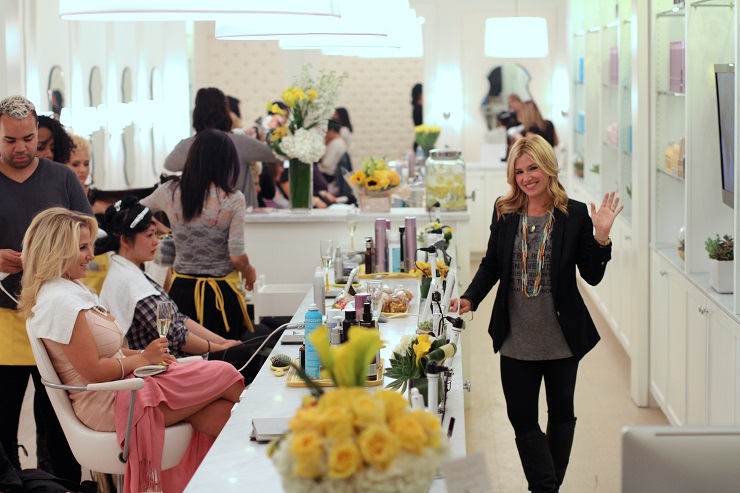One of the companies I take a look at in my new eBook for Forbes is Drybar, the blow-dry-and-style “non-salon” (no cuts, no color) phenomenon that’s transformed the haircare landscape with amazing rapidity. When I first came across Drybar in 2010, it had four shops, all in Southern California. Today, Drybar has nearly 40 salons across the U.S., with a London store opening soon. With 3,000 employees, Drybar is on track to take in $50 million in revenue this year.
As if that weren’t enough, Drybar’s recently branched out with a successful line of custom-designed blow dryers (in the company’s signature yellow) on QVC and an equally successful line of hair care products sold nationwide through Sephora.
Drybar should be a sitting duck for any would-be competitor with a hair dryer, a sink and some forearm strength. But thanks to its customer experience, Drybar rises above the competitive fray.
How Drybar Makes A Movie Starring Its Clients The 120,000 women who get their hair washed and styled each month at Drybar make it clear that the $40 premium the company charges is worth it.
The reason they choose Drybar is that Drybar has created an elaborate experience for them to star in. The Drybar customer experience (or “movie”) is extraordinarily well thought out, made up of hundreds of carefully created touchpoints that make each customer’s visit memorable.
Cofounder Michael Landau, who started the business with his sister Alli Webb, describes it like this: “What we’re selling at Drybar is a feeling and an experience. For 45 minutes you get to relax and be pampered, drinking a mimosa and indulging in the guilty pleasure of the latest chick flick or celebrity magazine while someone washes and brushes your hair.”
Making this metaphorical movie is much like directing and producing an actual film: It’s an involved, often technically complex business. Continuity, casting, lighting and more must be perfected or the illusion falls apart. Film directors such as Christopher Nolan, James Cameron and Peter Jackson spend endless hours poring over shots, making sure the light is just so, that the arch of the lead’s eyebrow rises in concert with the rhythm of the background music. Countless minor details merge into a completely immersive experience.
It’s not a stretch to say that Drybar thinks similarly about how all of the details coalesce in each new salon it opens—subtle touches derived, Landau says, “from our own intuition and experience as well as the feedback we gather from our clients and stylists.” Drybar’s craft and professionalism reveal themselves time and again as the “movie” progresses. There’s the swift, seamless online booking process and the expert, convivial pre-blowout consultation. Telephone hold times are tracked and kept to a minimum. The menu of blowout styles to choose from is humorously crafted and unique. Each chick flick Drybar screens has been carefully vetted (after all, a good rom com is hard to find) and captioned with subtitles to prevent auditory overload. The salon’s music playlist is so distinctive that Drybar has successfully released it as a CD.
And Drybar isn’t afraid to defy expectations or long-held traditions: Clients don’t sit in front of mirrors (until they’re wheeled around for the signature “reveal” at the end) because cofounder Webb discovered that clients relax more and micromanage the process less when they’re not looking at still wet, not-yet-perfectly-coiffed hair mid-blowout.
There are also the branded “Rain Blows” umbrellas that the company gives every client whenever the weather turns stormy. Not to mention the decor, lighting, stemware and chairs. (Drybar tried and tested dozens of different fabrics before agreeing on a chair.) The blow dryers themselves have been smartly tweaked. In an especially filmic touch, Drybar has figured out how to attenuate the sound of its blow dryers, to keep them from roaring like lawnmowers and drowning out the rest of the activity “on set.”
Read more: The Secret Of Drybar’s $50 Million Success: Make The Customer The Star












Leave A Comment